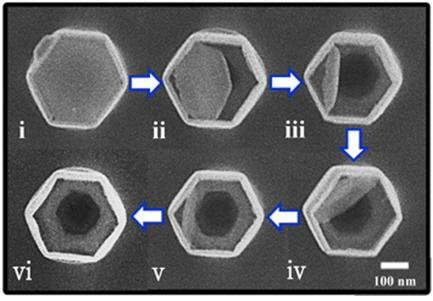Research
Various metal-oxide nanostructures, such as nanowires, nanorods, nanotubes, and nano-colloids have been receiving increased attention due to their wide applications in waveguides, solar cells, blue-UV light emitting diodes (LEDs), transparent transistors, and sensors. Among these oxide materials, zinc oxide (ZnO) is an important material for devices that require good performance at room temperature due to the fact that ZnO has a wide direct band gap (3.37 eV) at room temperature and a large exciton binding energy of 60 meV. For the realization of device applications, it is necessary to control both the pattern (e.g., diameter, location, and spacing) and the orientation of the ZnO nanostructures. So far, only a little attention has been paid to the reproducibility of the process and the quality of the patterned growth of ZnO nanostructures, even though this is an important issue to produce reliable nanoscale devices. A better understanding of the growth processes and the optimization of the growth conditions are thus necessary.
In this regards, tin dioxide (SnO2) and titanium oxide (TiO2) with rutile structure are also interesting metal oxides as media for high electron transport in optoelectronics. Especially, the crystal structure of TiO2 (either anatase or rutile) makes it difficult to grow oriented single-crystalline nanorods on a transparent conductive substrate. Our main issue on this project is to control the growth of single-crystalline metal oxides by hydrothermal growth and sol-gel process at a low temperature of < 100℃. Therefore, spatially and periodically aligned nanostructures are well grown on a substrate by using our established lithographic techniques and incorporated into optoelectronics for high efficiency. Vertically aligned anatase TiO2 tube structure is also pursued for high efficiency DSSCs.
References

